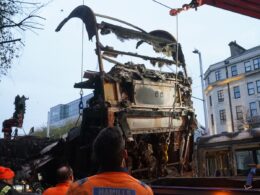Following the ballot on Haddington Road by ASTI members, a meeting is being called to consider setting up a new secondary teachers union.
The meeting is called by some members of ASTI Fightback, (an activist group within the ASTI), in reaction to anger and frustration felt at the imposition of a third ballot and the ongoing machinations of the union leadership.
However, to direct the energy of activists now to setting up a new secondary teachers union is misguided and mistaken. It also fails to deal with the central problem of the need to transform the entire trade union leadership, not just the teachers unions, which, if anything are nowhere near as dormant or corrupt as some other unions.
The question of leaving unions after the reversal of the Croke Park ballots came up in many unions, from nurses to local authority workers. But the solution is not to leave these unions and try establish new ones. A challenge to the leadership has to be built within these unions. If key activists leave these unions to set up new ones, it is highly unlikely that a majority of members will leave with them, as there hasn’t been the level of activity in unions to enable this.
When James Larkin split from the NUDL to establish the ITGWU a century ago, it was at a time when the unions were growing and activity and militancy was at a peak. Similarly, in later years, when he left the ITGWU to form the FWUI, Larkin brought several thousand with him because of his massive authority and history. But he did not bring a majority, as the union bureaucracy was much more developed and there hadn’t been the same militancy.
Even if the new union managed to get through all the legal and administrative obstacles to be recognised by the Dept. of Education – which would take a massive amount of work and energy – it would be a tiny union in the current climate.
Setting up a new union doesn’t deal with the key problem which is that the union membership is not currently engaged enough to take on the union bureaucracy and the government. This isn’t sufficiently recognised by some who reacted to the ballot result in disbelief. The narrow acceptance of Haddington Road by the ASTI was hardly surprising, given the wearing down of members, who saw no other viable alternative given the isolated position of the union and the intimidation from government.
ASTI Fightback and activists have played a good and important role in challenging the leadership, trying to disseminate information to the members. If similar groups had existed in other unions – for example the nurses – the results on Haddington Road might well have been different. Setting up a new secondary teachers’ union does nothing to address this core deficit of the need to develop an activist layer across all unions, which can come together to oppose deals which reduce members’ interests.
It would be better to work to really build ASTI Fightback to develop a base in all schools/ branches and to work to build activist groups in ALL unions, than to divert the best members out to building a new union, unlikely to be joined by a majority of teachers.












